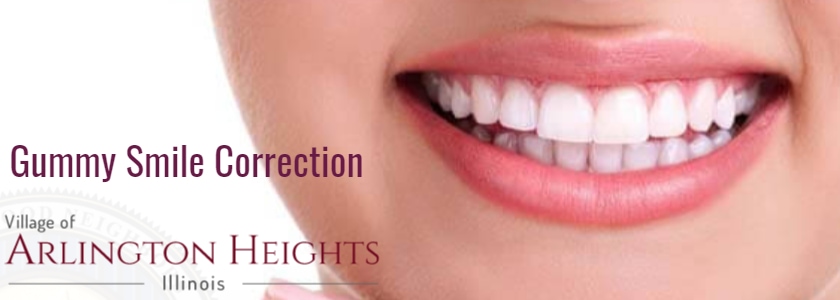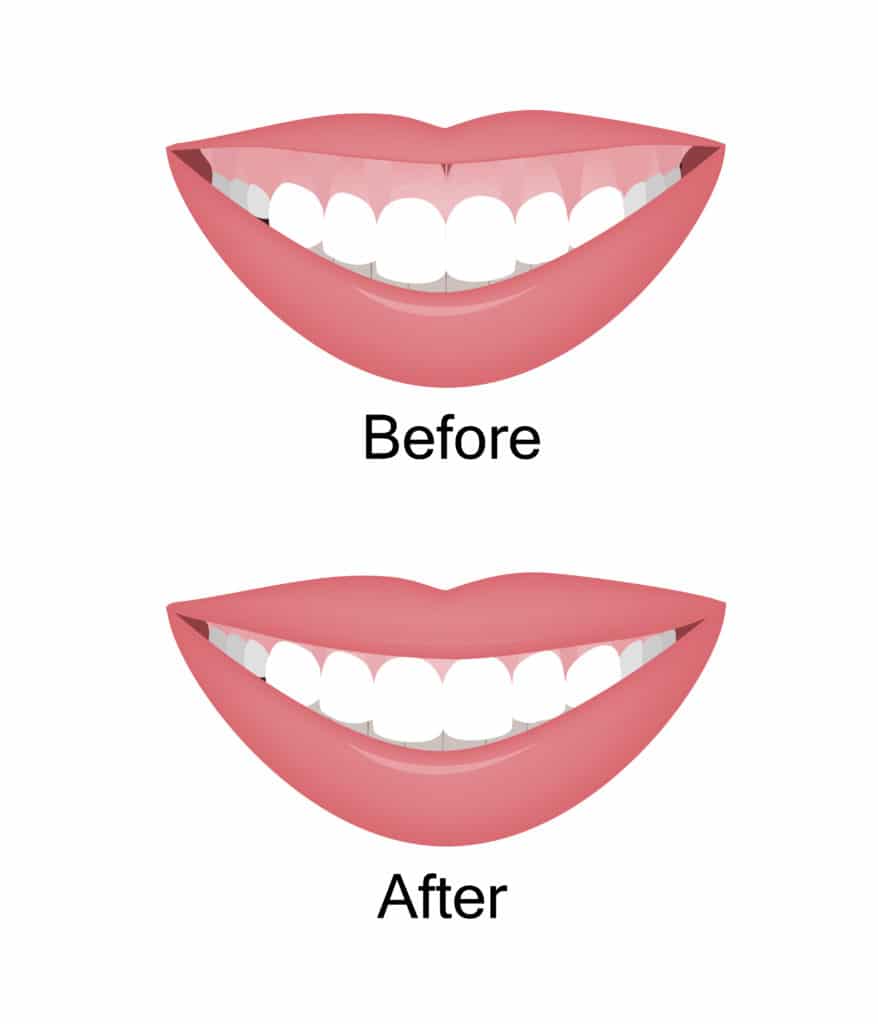
Gummy Smile Correction
In today’s society, an attractive smile is critical to a pleasing appearance. It is an invaluable asset that creates a feeling of self-confidence and self-esteem. Excessive gingival display (EGD), often referred to as a “gummy smile,” would be an example of negative visual tension created by normal proportions being out of balance. Ideally, in an attractive smile, 2.0 mm or less of gingival tissue would be displayed. In fact, a study shows that a gingival display of 3.0 mm or greater is consider to be unattractive and not visually appealing.
Often these patients are treated by lining up the teeth and creating a beautiful straight smile, leaving the gumminess and feeling bested when the patient really smiles and shows an acre of gums. Just a few milli-meters of gum-show can distract even the most beautifully treated orthodontic case.
What Is a Gummy Smiles Treatment Better Than Orthognathic Surgery?
There are a number of options available for correcting a gummy smile, including a gingivectomy, crown lengthening, orthognathic surgery, lip repositioning, and botox. Figuring out which option is right for you largely depends on the root cause of your gummy smile. While there are many possible causes, the most common ones are gums that are long or enlarged, a short or hyperactive upper lip, teeth that are comparatively small, or an upper jaw that is overgrown and makes the gums bulge out.
Today there are many less invasive and more affordable treatments for a gummy smile. In the past, people who were bothered by a gummy smile were limited to a type of surgery called “orthognathic surgery” (jaw surgery). This risky procedure often involves breaking the upper jaw and removing pieces of bone in other hand gummy smile surgery is considerably more affordable than jaw surgery which has less complexity of the surgery, discomfort, hospitalization, and inherent risk and complications.
Dental Implant
Emergency Care
Teeth cleaning
What Other Treatments Can Improve The Look Of My Gums?
In some cases, combining gummy smile treatment with crown lengthening or excess gum tissue removal may be required to create an attractive smile. Aesthetic gum bleaching can also improve the look of dark or discolored gums for an overall more pleasing and healthier appearance.
Are There Any Treatments For Gummy Smile?
When the gum-to-tooth ratio of your smile is imbalanced, you may be said to have excess gingival display, or a gummy smile. Excess gingival display can cause your teeth to look abnormally small or overshadowed by gum tissue. You may feel self-conscious about the way you look or try to smile in ways that hide the gum tissue. Corrective procedures are available that can transform your smile for a more attractive, balanced appearance. You may be a candidate for: Lip lowering: If a hypermobile lip is responsible for your gummy smile, we can use “lip lowering,” a surgical procedure to improve the appearance of your lip and reduce the gummy look of your smile. Some patients require BOTOX® injections in conjunction with lip lowering. Crown lengthening: This is a procedure in which the excess tissues are removed from the tooth. In some cases, the bone may also need to be adjusted. This exposes more of the natural crown for a more attractive look. Gum contouring: An uneven gum line can be treated using a combination of regenerating techniques and crown lengthening for a more balanced look. BOTOX: BOTOX is a temporary treatment that relaxes the muscles of the upper lip to minimize the display of excess gums.
What Is The Recovery Like After Lip Lowering Surgery?
One of the benefits of this procedure is the minimal downtime involved. Most patients don’t experience significant discomfort, and complications are rare (but it’s important to follow Dr. Bilus Poles’s postoperative instructions). Patients should avoid laughing suddenly in a way that results in a big smile, because it may pull the stitches. The upper lip typically feels tight for the first 2 weeks after surgery. This is temporary, and the lip gradually returns to normal, with many patients saying it even looks fuller and more appealing.

What Will My Results Be Like?
Case selection, patient education, and having realistic expectations are extremely important factors when it comes to achieving satisfying results. If a patient expects a perfect smile regardless of the complexity of the case, it may not be possible to achieve it. For example, certain conditions, such as a hypermobile lip with asymmetry, may be difficult to completely eliminate because of the inherited muscle pull or anatomical aberrations on one side. That said, nearly every case can be improved upon. As an experienced periodontist, Dr. Bilus Poles always reminds his patients before surgery that the goal of treatment is to minimize the excessive display of gum tissue and reduce the gummy smile appearance. He will give you a good idea of the results you might be able to expect before you proceed with surgery.


